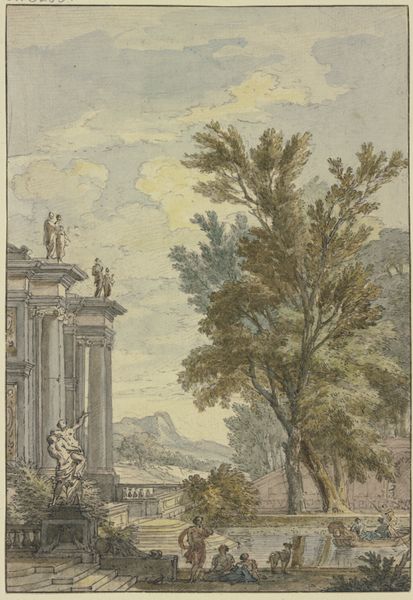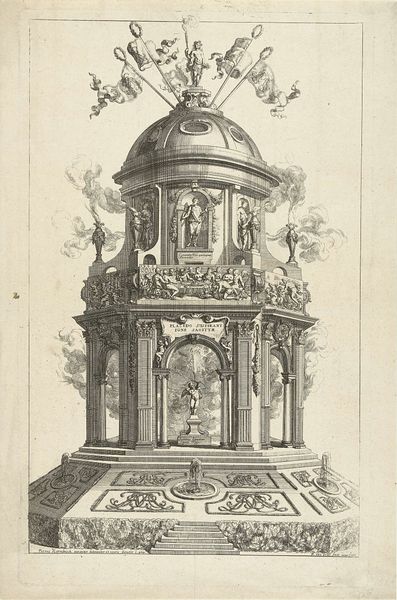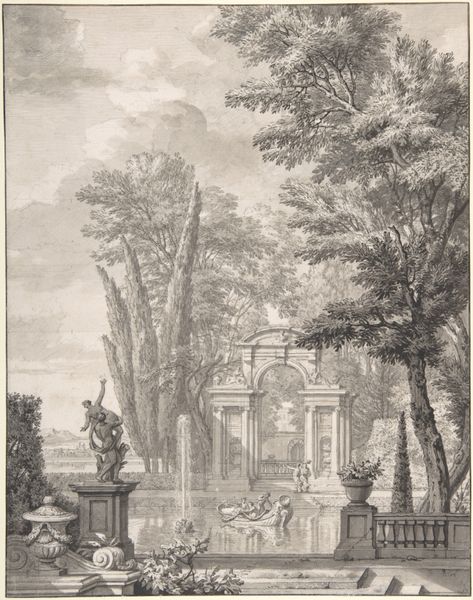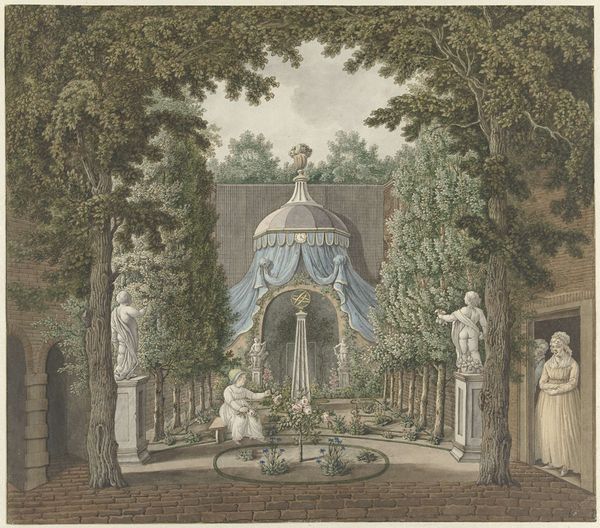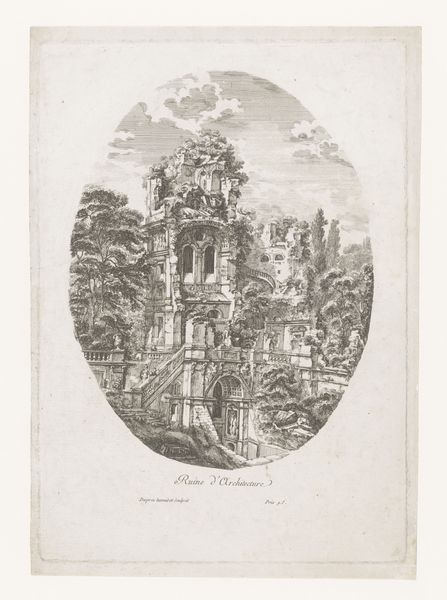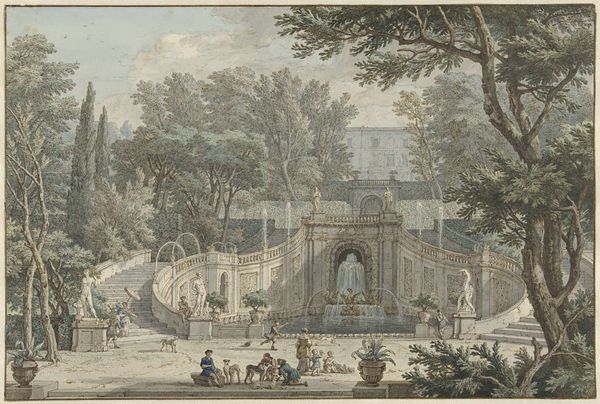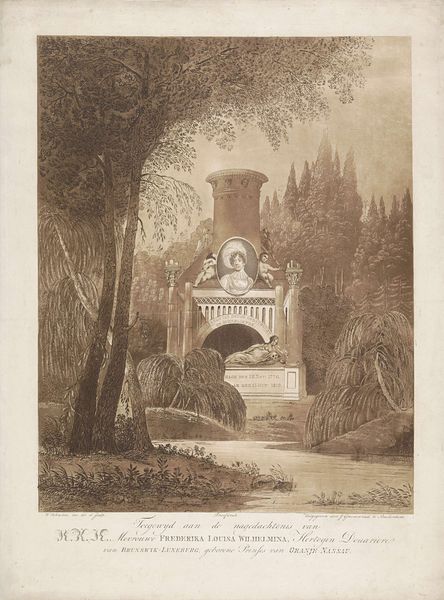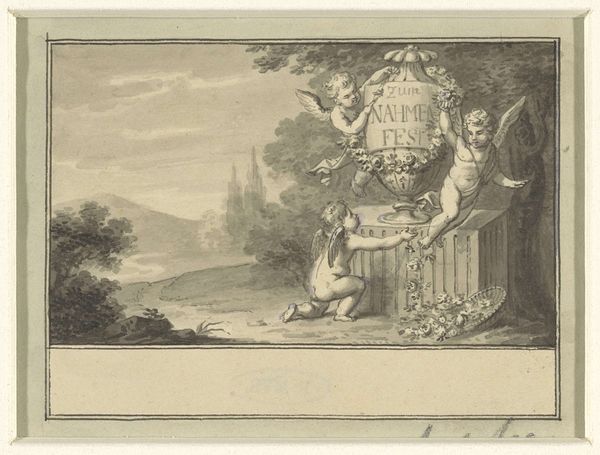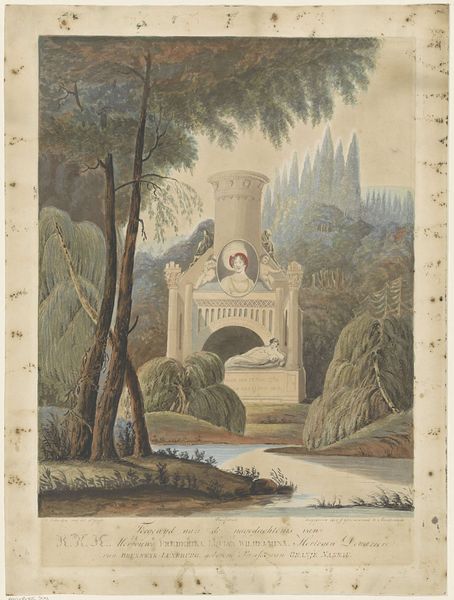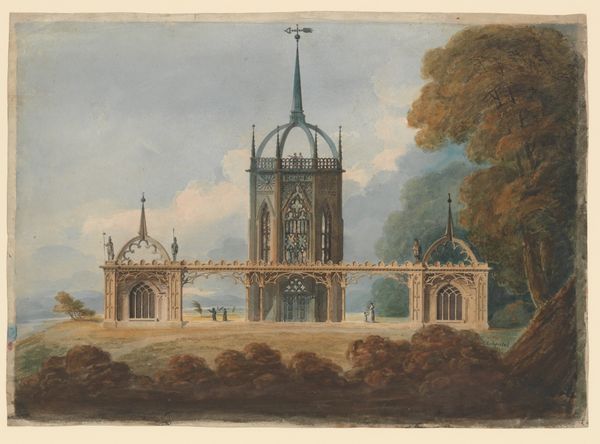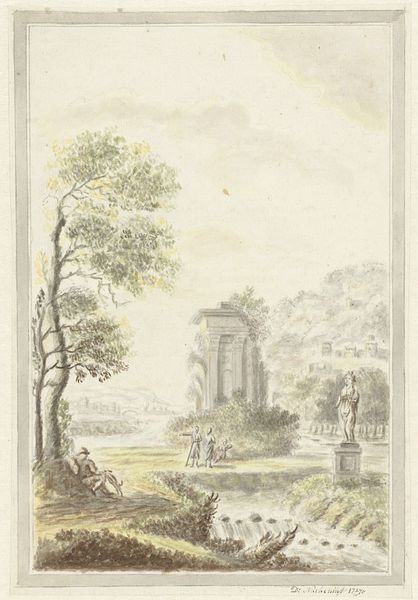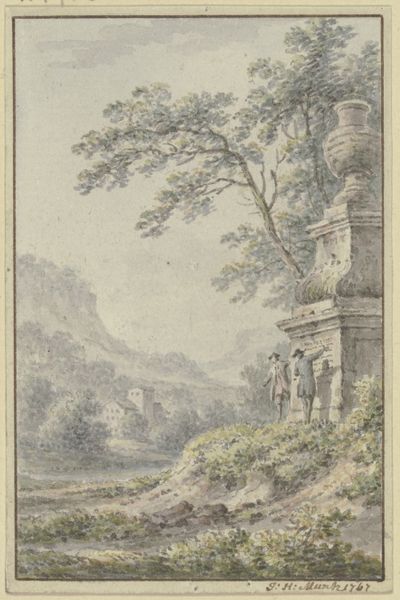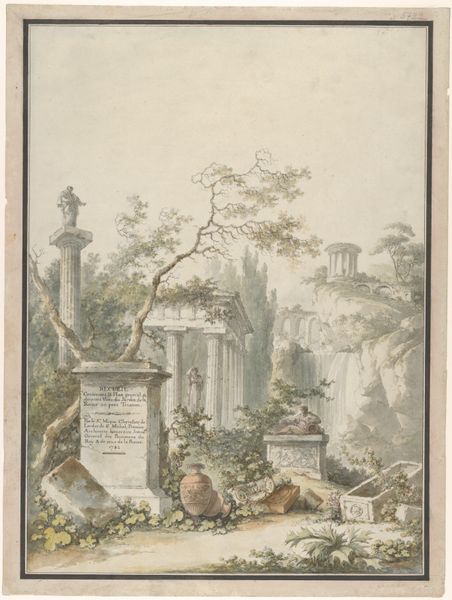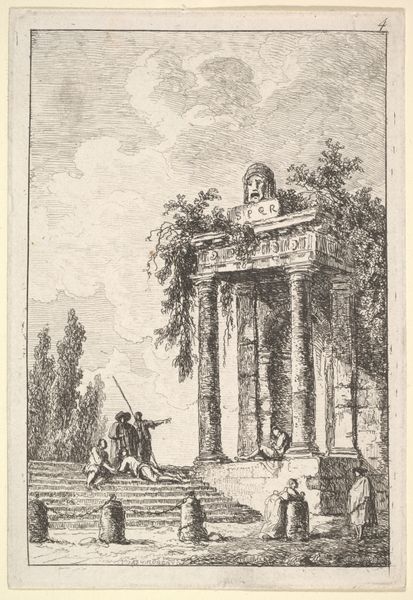
Design for the Temple of Apollo in the Gardens of the Chateau d'Enghien, Belgium 1780
0:00
0:00
drawing, coloured-pencil, print, watercolor, architecture
#
drawing
#
neoclacissism
#
coloured-pencil
# print
#
landscape
#
watercolor
#
coloured pencil
#
architecture
Dimensions: Sight: 12 × 14 in. (30.5 × 35.6 cm)
Copyright: Public Domain
Curator: This is a drawing by Charles de Wailly entitled "Design for the Temple of Apollo in the Gardens of the Chateau d'Enghien, Belgium," created around 1780. He used watercolor and colored pencil. What do you make of it? Editor: Immediately, a sense of theatrical serenity strikes me. Like a stage set for a myth. The cool, airy colors lend a gentle quality; I almost feel a breeze. Curator: De Wailly was a prominent figure in the Neoclassical movement. It's fascinating how he integrated architectural designs within these planned gardens. Editor: There is a wonderful tension here. It feels like both control and wildness exist in one frame. Manicured lawns but that overgrowth is such a fascinating aspect. A beautiful cage! Curator: Absolutely. Gardens, during this period, served as extensions of power and influence. It was about controlling and ordering nature itself! To demonstrate control of landscape with reference to the classical world shows social aspiration. Editor: Do you find it cold? It all looks so staged, ready for a performance that never happens. It is a sketch, but even that feels a bit lifeless somehow... maybe that is because nature still awaits. It is the plan after all. Curator: While there is definitely an element of formality, Neoclassicism was about rational beauty, right? An antidote to what they viewed as the excesses of the Rococo, where aesthetics were about feeling over reason! Editor: Ah, good point! The Temple itself reminds me of the folly! A strange little construction for daydreaming and light philosophical debate in solitude. It's beautiful, if perhaps a touch grandiose, especially given the modest figures depicted within the plan. I want to feel the grass here, in short! Curator: Precisely, the figure groups contribute to the scale, emphasizing that harmony and balance. But remember that De Wailly was presenting more than just aesthetics. It represented a specific kind of governance; control of the passions through reason. It’s very much an ideological vision. Editor: A potent reminder that gardens, no matter how seemingly natural, have always been meticulously designed—carriers of cultural values, laid out by hand... and now visible here within our walls. It invites one into those hidden corners where art, power, and nature meet. Thank you. Curator: Indeed. It's about perspective isn't it? A lens to see society through nature.
Comments
No comments
Be the first to comment and join the conversation on the ultimate creative platform.
